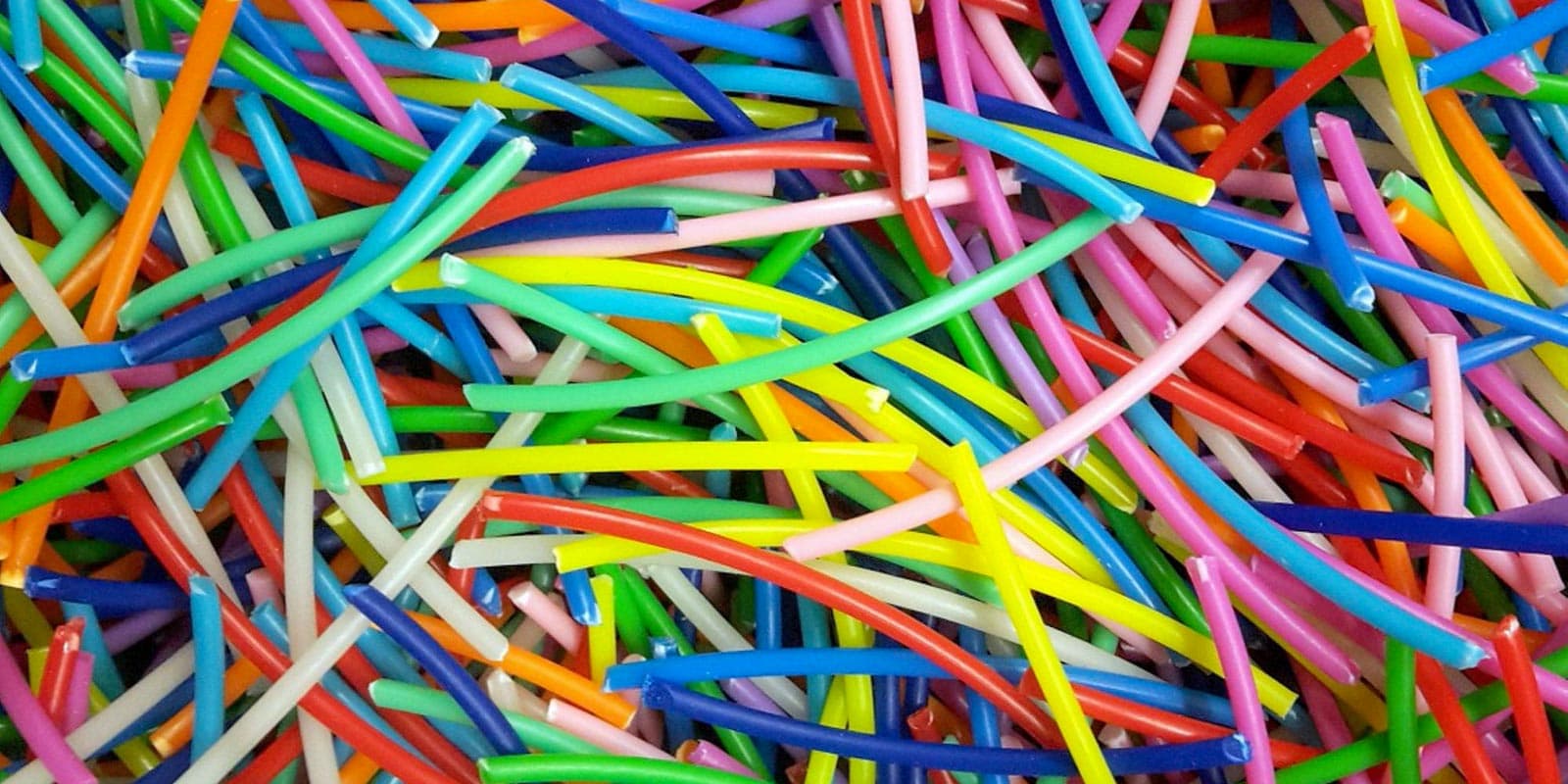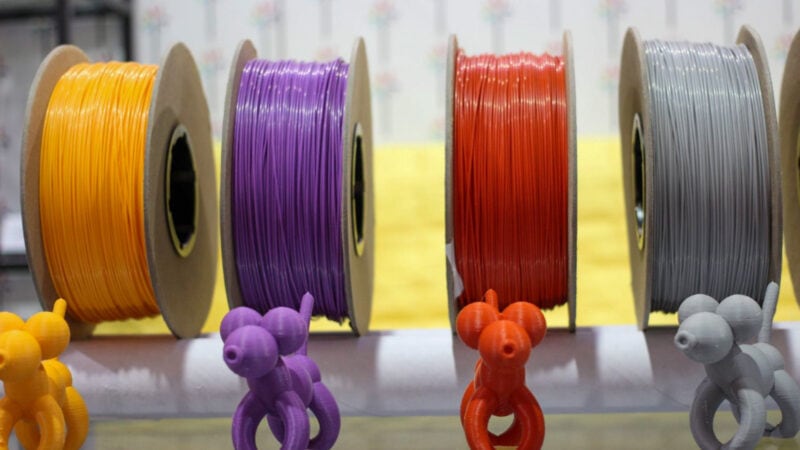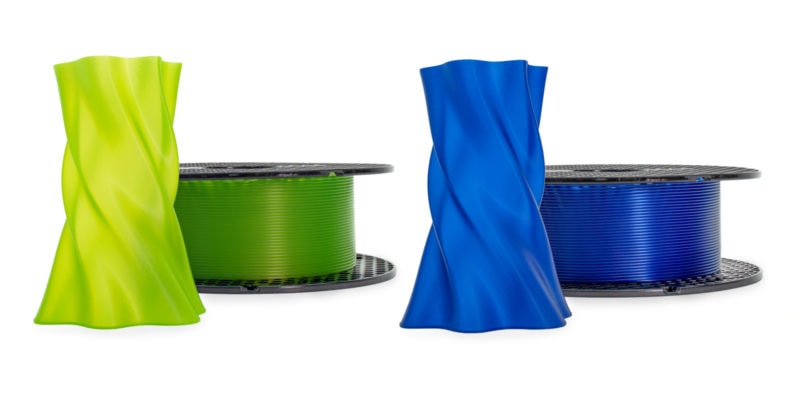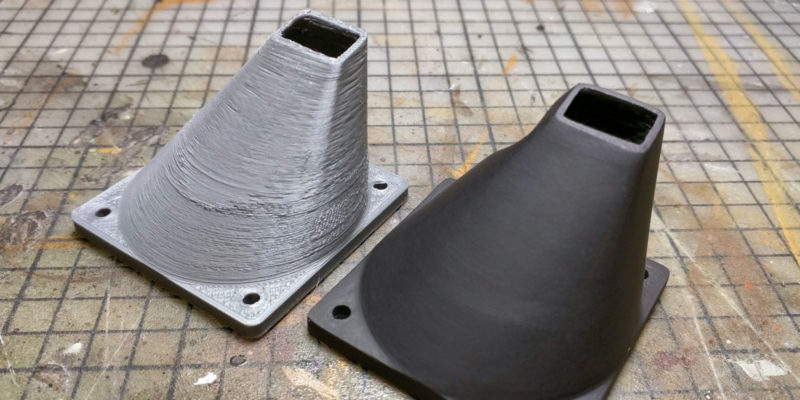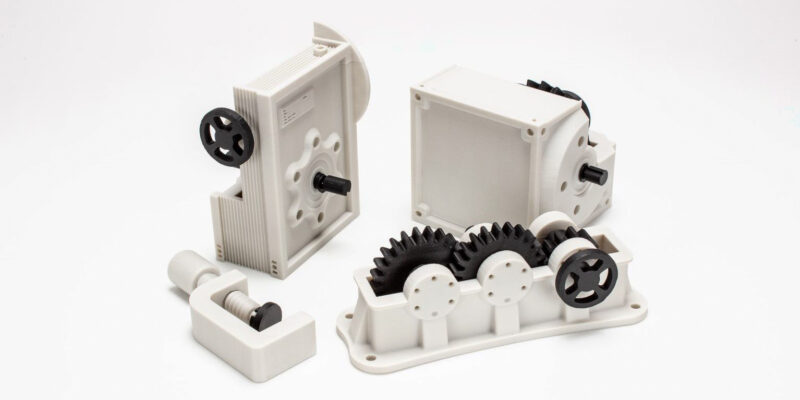You have the perfect 3D printing project in mind. You think PLA is the best material for it and decide to use a roll you bought a few months ago. You have everything set and ready to go when the worst happens—your PLA filament snaps mid-print.
You reload the filament and resume your print. Your filament snaps again.
And again. And again.
Sound familiar? That’s because brittle PLA filament is a common problem in 3D printing that can be massively frustrating to deal with.
Why does PLA turn brittle in the first place? And what can you do to fix it?
In this article, we’re going to take a closer look at the possible causes of brittleness in PLA filament, how to fix it, and how to prevent it from happening again.
Why Does PLA Filament Get Brittle?
Polylactic Acid (PLA) is a bioplastic material that is naturally prone to some brittleness. However, there are a few factors that can make PLA filament too brittle to use reliably.
Moisture
One common cause of brittleness in PLA filament is moisture absorption. PLA is a hygroscopic filament, meaning that it absorbs moisture from the air. Most filament has at least a small amount of moisture in it. When it takes on too much, the trapped water can affect the filament’s flexibility and make it more prone to snapping.
Admittedly, there is no real consensus on this issue in the 3D printing community. While absorbed moisture has been long touted as the cause of brittle PLA filament, others swear that water content has nothing to do with it. Since moisture-related solutions like silica beads and filament drying reduce brittleness in PLA and other plastics more often than not, we’re not yet convinced that the two do not correlate.
Spool Tension
PLA can also become brittle from the mechanical stress of being spooled. The filament tends to snap when it is straightened out after spending prolonged time on a spool. This is one of the reasons that brittleness worsens as the filament ages.
Low-Quality Filament
As mentioned above, all PLA is somewhat brittle. High-quality filaments minimize this as much as possible by using premium and pre-dried PLA pellets in their filaments. The best PLA filament brands also dry the finished filament before packaging it to get rid of any moisture taken on during the production process.
Low-quality filaments aren’t created with the same level of care. These manufacturers make their filaments from cheap materials and utilize the bare minimum of quality assurance. Cheap PLA filaments may also contain fillers and additives that keep down production costs but reduce product quality.
If you have any PLA that is very brittle or deteriorates quickly, it is most likely a low-quality material. There isn’t much you can do to help these products, and you may have to just replace them with a more reputable brand.
Additives
Depending on the brand, you may experience brittle PLA filament due to additional polymers or chemicals. Manufacturers sometimes include these to change certain properties of PLA or give their filament additional benefits. While this is generally a good thing, it sometimes has unintended consequences.
For example, early antimicrobial PLA filaments were notoriously brittle. While the added disinfectant materials inhibited bacterial growth on the PLA, they also made it less flexible.
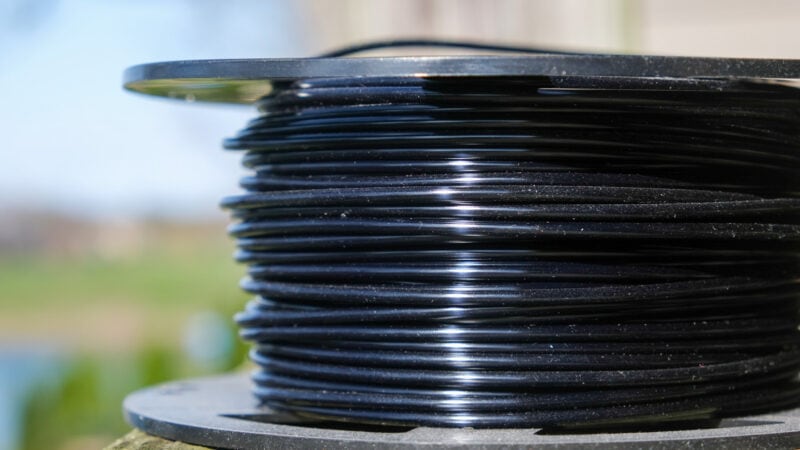
How Can You Tell If PLA Filament Is Bad?
Brittle PLA filament in and of itself is a sign that your roll (or at least its outer layers) is not in the best condition. If you aren’t sure how to tell if your PLA has turned brittle, there is an easy way to test it.
Try to break off a piece of filament. Good PLA will bend back and forth several times before it breaks, while brittle PLA snaps cleanly. Also, try to straighten out the end of the filament line. If it snaps, that is another sign that your PLA may have gone brittle.
Other signs that your PLA has reached the end of its lifespan or that the filament roll needs to be refreshed is if the filament breaks frequently during prints. A rough surface, under extrusion, PLA not sticking to the bed, popping noises during 3D printing, and weak final prints are also indicators of old or low-quality filament.
Can You Revive Brittle PLA?
Brittle PLA filaments can sometimes be saved, but it depends on how degraded the material is overall. There are several ways in which you can approach this.
Heat the Filament
To deal with brittle PLA filament that has absorbed moisture, you can try to remove some of the trapped water by heating the PLA filament spool in a filament dryer. These products heat the PLA filament nearly to its glass transition temperature for several hours. This process helps the filament dry without damaging it further through thermal stress.
Some users try more accessible equipment to do this, such as a conventional oven or a food dehydrator. While these options can work in a pinch, they don’t have the same precision as a filament dryer.
Be extra careful of temperature control if you try to use kitchen appliances like an oven as an alternative. Overheating PLA filament during the drying process can actually make your PLA more brittle.
Raise the Nozzle Temperature
If your PLA filament keeps breaking during 3D printing, try raising the PLA print temperature. The higher temp may dry the filament somewhat as it is fed into the hot end. It can also help relax some mechanical stress and make the pre-extruded filament strand more flexible.
Adjust the Feed Angle
If your PLA snaps when you force the filament straight, it is most likely mechanical stress tension from being wound on the spool. The easiest way to reduce this issue is by ensuring the filament strand stays slightly curved when feeding into the 3D printer. You may need to experiment and move your spool holder around until you find the right angle.

What to Do When PLA Keeps Breaking?
If you tried both of the above methods and your PLA still keeps breaking, your filament is most likely too degraded to fix. At this point, your options are to buy a new spool or to work through the brittleness issue.
If you choose to keep 3D printing with brittle PLA filament, you’ll need a printer with a filament sensor that automatically pauses your print when the printer runs out of filament. It will be extremely difficult to finish a print without this function when your filament is prone to breakage.
Continue to keep the print temp high and continue to adjust the spool and spool holder to minimize tension breakage.
How Do You Prevent Brittle PLA Filament?
PLA filament will always have some brittleness as it ages. It doesn’t last indefinitely, and you should always aim to use up a spool within a few months of opening it.
Storage
The best way to prevent PLA filament from getting brittle is by storing the filament properly. Keeping it in an airtight bag or airtight container with a desiccant like silica gel can do wonders to protect against moisture and keeps your PLA filament dry.
Any airtight box or Ziploc bag would help protect your printer filament from moisture, but there are dedicated filament dry box solutions specifically designed for this purpose.
PLA filaments are usually fine to leave exposed to the open air for a few months while you’re using them unless you’re in an area with high humidity. You might wonder: does PLA filament go bad? The answer is that it typically only has a shelf life of about a year.
If you take a while to get through a roll or you switch between other materials quite a bit, you should put your PLA filament in a dry box as soon as you open it.
UV Light/Thermal Exposure
Another way to avoid brittle PLA filament is by keeping it out of direct sunlight and in ambient temperatures. If your 3D printer is in a sunny spot in your home, try to move it somewhere shaded. UV light can degrade the dyes and additives in PLA filaments over time, which can degrade the filament and decrease its elasticity.
PLA is also sensitive to high temperatures and frequent temperature changes. While sunlight typically doesn’t get filament anywhere near polylactic acid’s glass transition temperature, it can still get the environment hot enough to warp and deform PLA filament. This degrades the material over time and is another great motivation to cut out as much sunlight and UV exposure as possible.
Quality PLA Filament
In the end, it doesn’t matter what precautions you take to avoid brittle PLA filament if you buy lower-quality filaments. These products can even have issues with the PLA filament snapping when they first arrive, so there is no way to prevent the problems before they develop.
You should choose a high-quality filament brand that sources good materials, is transparent about what is in its products, and emphasizes quality assurance.
The best PLA filament brands dry their spools from moisture before they package them, so you have extra assurance that your filament won’t have a moisture problem before it even reaches you.
Should You Take Any Measures to Protect PLA Prints?
Depending on the function of your PLA parts, you may want to take additional steps to protect them from degrading. Painting PLA, smoothing PLA, and sealing your prints can offer additional protection against UV and moisture exposure. A watertight sealant can also make sure it won’t continue to absorb moisture after 3D printing, plus it helps make PLA food safe.
To give your PLA prints more heat resistance, you can put them through a treatment called annealing. This process works with special PLA formulas like Protopasta HTPLA. They contain additives that let you print at the same temperature as regular PLA but can withstand high temperatures post-printing when heat treated.
In the end, whether or not you should treat your PLA prints comes down to personal preference and the part’s intended use. For something decorative, you may choose to paint it for aesthetic purposes, but a seal is mostly practical if don’t want it to absorb moisture. The outdoor humidity is great at creating brittle PLA prints.
Final Thoughts on Brittle PLA
There are several causes of brittle PLA filament. Whether it absorbs moisture, has too much mechanical stress from being on its spool, or simply degrades in quality, brittle PLA filament can significantly impact the print quality and durability of your 3D prints.
Prevention comes down to proper storage of your PLA filament and keeping it from being exposed to humidity and moisture. While there aren’t many ways to fix PLA filament that has already turned brittle from moisture, you can sometimes revive it enough to print with it by drying it out in a filament dryer or conventional oven.
We recommend keeping your PLA filament stored in a dry box or sealed bag until you’re ready to use it, refresh what degraded filament you can with a dedicated filament dryer, and always 3D printing with a good premium filament.
Do you still have questions about PLA filament maintenance? Let us know in the comments!
